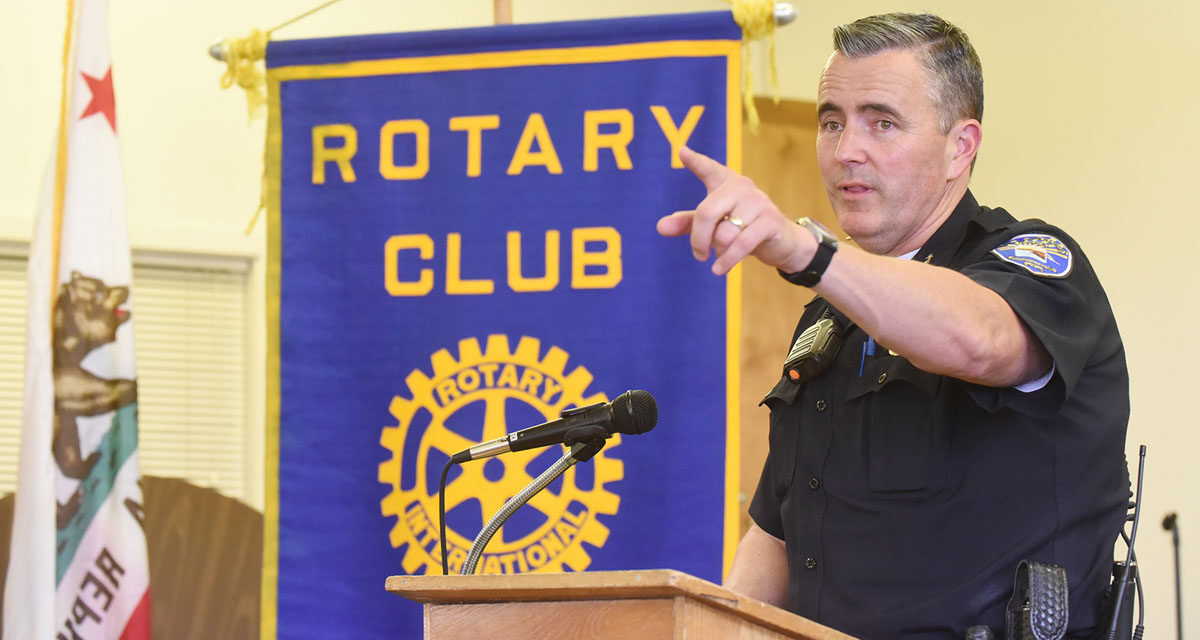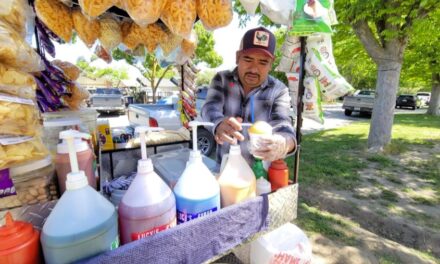Many people see homelessness as a problem that is too big, too complicated and too difficult to solve. In the Merced County city of Los Banos, people are instead seeing solutions.
By focusing on individuals instead of perceived big problems, a group of Merced County volunteers, public employees, healthcare workers and law enforcement have helped 20 people find their bearings and begin to put their lives back together.
“You are talking about building people back up, about building dignity,” said Los Banos Police Chief Gary Brizzee, who was deeply involved in the effort. “It’s amazing what a clean, warm bed can provide for people.”
That approach was developed during the 100-Day Challenge Initiative, resulting in 12 percent of Los Banos’ homeless population moving out of tents, old cars or a temporary shelter into their own homes. For some, stable housing has led to some reconnecting with family, finding work and gaining sobriety.
Across California, 15 counties have participated in the 100-Day Challenge since its inception in 2019. Under the Challenge, each county has designed, developed and managed a program to help reduce homelessness with coaching from Re!nstitute (formerly known as the Rapid Results Institute).
Merced County was in the fourth cohort and is the second-smallest county to participate since the program began. Project leaders came from county agencies, the city of Los Banos, health-care providers, non-profits and Assemblymember Adam Gray’s staff. Chief Brizzee assigned a code-enforcement sergeant to the team.
The county had already found some success in providing housing through Project Roomkey, and team leaders were able to build on that.
“Our results generated excitement across the cohort,” said Elizabeth King, who chaired the group. “Through the whole 100 days, people (from other counties) kept asking us, ‘What are you doing different?’”
When the team committed to housing 20 people in 100 days, the Re!nstitute coach called it an “audacious goal” in the face of California’s extreme housing shortage, COVID-19 and the lack of data on the homeless living in Los Banos.
That’s why the first step — collecting solid, reliable and thorough data by visiting Los Banos’ two major encampments – was essential. Though many of the homeless were initially wary of the visitors, what emerged was an incredibly detailed picture of who needed housing.
“The integrity of the data was absolutely critical,” said King, crediting the Coordinated Entry System, Providers and Outreach Teams for gathering it and Code Enforcement for locating clients. “We sat as a team once a week identifying the unhoused, identifying needs and finding resolve. There was a face to a name. Even when we didn’t have a bed to offer them, we had food, clothes, IDs, vouchers.”
Among those encountered by the interviewers was a deaf woman, unable to speak and suffering dependency issues. She is now housed and getting care. A formerly homeless man got housed and has reconnected with a sister for the first time in 20 years.
Said another man, “Society discarded me, but now I feel validated and heard.”
Among 153 homeless individuals in Los Banos, many had no identification making it impossible to access benefits. Team members helped them navigate the complicated path of regaining ID – even reaching out to the Mexican Consulate when necessary.
“This shows that when government works within the community — with people who are serious and who care — we can achieve great things,” said Assemblymember Gray. “The state can provide resources, but it can’t fix problems without the kind of effort we provided in Merced County. This county did something fantastic, something important, and we should be proud.”
The results are becoming obvious – smaller camps, less litter, fewer nuisance calls to police.
“You can look at homelessness through the lens of impacts on the quality of life in the neighborhoods surrounding wherever the encampment is,” said Chief Brizzee. “We want to reduce those impacts on the residents of our community.”
It’s working, but even a targeted effort can’t help those who refuse help.
“While not everyone will accept assistance, we did help a significant portion,” said John Ceccoli, deputy director of Merced County Human Services Agency. Providing help when it is wanted requires partners and resources.
“We had a lot of help, including a local champion in Assemblymember Adam Gray,” said Ceccoli. “He was involved from the start. And law enforcement – not a traditional function for them – they came through in a big, big way.”
How do King, Brizzee, Ceccoli and Gray know the program was worthwhile? Because it’s still working. Re!nstitute and Merced County were ecstatic to meet the goal of housing 20 individuals by April 21, but since the challenge ended, 11 more individuals have been placed in permanent housing.




